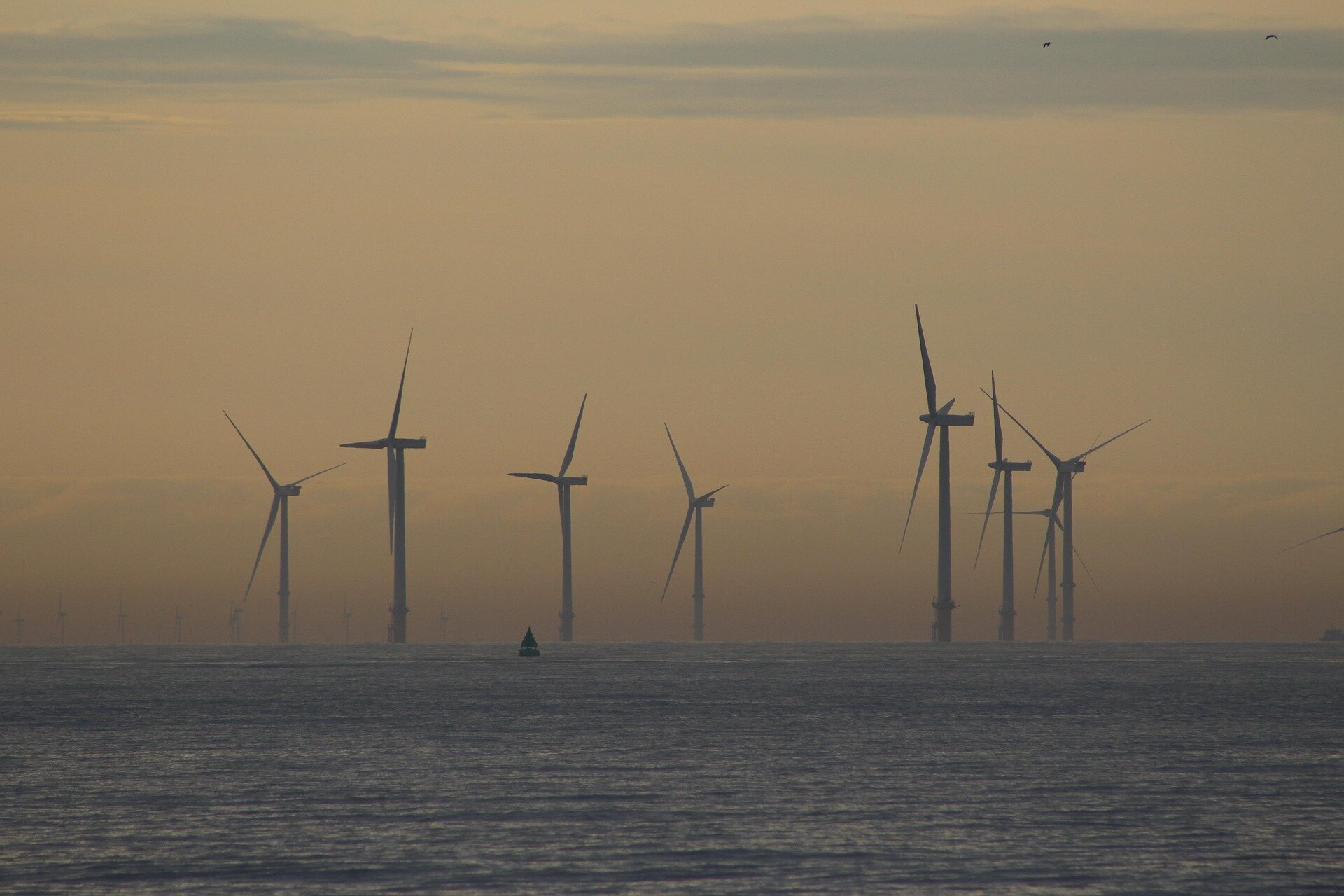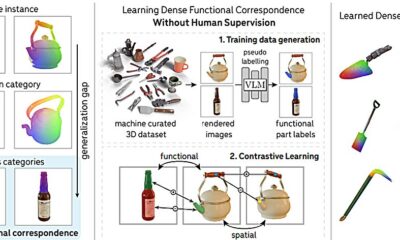Tech
Wind power has saved UK consumers more than £100 billion since 2010—new study

Renewable energy is often pitched as cheaper to produce than fossil fuel energy. To quantify whether this is true, we have been studying the financial impact of expanding wind energy in the UK. Our results are surprising.
From 2010 to 2023, wind power delivered a benefit of £147.5 billion—£14.2 billion from lower electricity prices and £133.3 billion from reduced natural gas prices. If we offset the £43.2 billion in wind energy subsidies, UK consumers saved £104.3 billion compared with what their energy bills would have been without investment in wind generation.
UK wind energy production has transformed over the past 15 years. In 2010, more than 75% of electricity was generated from fossil fuels. By 2025, coal has ceased and wind is the largest source of power at 30%—more than natural gas at 26%.
This massive expansion of UK offshore wind is partly due to UK government subsidies. The Contracts for Difference scheme provides a guaranteed price for electricity generated, so when the price drops below this level, electricity producers still get the same amount of money.
The expansion is also partly due to how well UK conditions suit offshore wind. The North Sea provides both ample winds and relatively shallow waters that make installation more accessible.
The positive contribution of wind power to reducing the UK’s carbon footprint is well known. According to Christopher Vogel, a professor of engineering who specializes in offshore renewables at the University of Oxford, wind turbines in the UK recoup the energy used in their manufacture, transport and installation within 12-to-24 months, and they can generate electricity for 20-to-25 years. The financial benefits of wind power have largely been overlooked though, until now.
Our study explores the economics of wind in the energy system. We take a long-term modeling approach and consider what would happen if the UK had continued to invest in gas instead of wind generation. In this scenario, the result is a significant increased demand for gas and therefore higher prices. Unlike previous short-term modeling studies, this approach highlights the longer-term financial benefit that wind has delivered to the UK consumer.
Central to this study is the assumption that without the additional wind energy, the UK would have needed new gas capacity. This alternative scenario of gas rather than wind generation in Europe implies an annual, ongoing increase in UK demand for gas larger than the reduction in Russian pipeline gas that caused the energy crisis of 2022.
Given the significant increase in the cost of natural gas, we calculate the UK would have paid an extra £133.3 billion for energy between 2010 and 2023.
There was also a direct financial benefit from wind generation in lower electricity prices—about £14.2 billion. This combined saving is far larger than the total wind subsidies in that period of £43.2 billion, amounting to a net benefit to UK consumers of £104.3 billion.
Wind power is a public good
Wind generators reduce market prices, creating value for others while limiting their own profitability. This is the mirror image of industries with negative environmental consequences, such as tobacco and sugar, where the industry does not pay for the increased associated health care costs.
This means that the profitability of wind generators is a flawed measure of the financial value of the sector to the UK. The payments via the UK government are not subsidies creating an industry with excess profits, or one creating a financial drain. They are investments facilitating cheaper energy for UK consumers.
Wind power should be viewed as a public good—like roads or schools—where government support leads to national gains. The current funding model makes electricity users bear the cost while gas users benefit. This huge subsidy to gas consumers raises fairness concerns.
Wind investment has significantly lowered fossil fuel prices, underscoring the need for a strategic, equitable energy policy that aligns with long-term national interests. Reframing UK government support as a high-return national investment rather than a subsidy would be more accurate and effective.
Sustainability, security and affordability do not need to be in conflict. Wind energy is essential for energy security and climate goals—plus it makes over £100 billion of financial sense.
This article is republished from The Conversation under a Creative Commons license. Read the original article.![]()
Citation:
Wind power has saved UK consumers more than £100 billion since 2010—new study (2025, October 28)
retrieved 28 October 2025
from https://techxplore.com/news/2025-10-power-uk-consumers-billion.html
This document is subject to copyright. Apart from any fair dealing for the purpose of private study or research, no
part may be reproduced without the written permission. The content is provided for information purposes only.
Tech
How digital technologies can support a circular economy

The role of digital technologies, such as IoT, 3D printing, and digital platforms, holds significant potential for supporting a circular economy. However, digital technologies are not a magic fix that can instantly change how physical resources are used and produced to prevent waste and promote a circular economy.
In her doctoral thesis, Ida Eyi Heathcote-Fumador explores digitally mediated circular practices within ecosystems to understand the human–material interactions involved in enabling a digitally mediated circular economy. Heathcote-Fumador will defend the thesis on November 5.
Circular economy focuses on managing the use and creation of physical resources, products, residual materials, and by-products to prevent them from ending up in landfills as waste, while ensuring that organic materials safely return to the environment.
What challenges do you focus on in your research?
Material resources and their sustainable management are central to the circular economy, while digital technologies are often seen as more intangible, flexible, and having multiple functions. When examining the role of digital technologies, we often overlook the material characteristics that shape these technologies, as well as the human activities involved in ensuring that technological and material configurations align with the principles of sustainable material management.
How do you address the problem?
I studied two ecosystems, or groups of organizations working together: one in Ghana, Africa, and the other in Europe, specifically Sweden and Portugal. Both focused on using digital technologies to support the sustainable recovery of waste from the environment.
Through interviews, observations, and document analysis, I examined how physical materials, digital technologies, and human activities influence each other to create digitally mediated circular practices. I used a human-material tuning approach to understand the mutual roles of materials, digital technologies, and human actions in establishing circular practices.
What are the main findings?
I developed a model showing that the circular principles of resource care are central to activities leading to the emergence of digitally mediated circular practices. Human actions involve the collective imagination of sustainable futures for production and consumption, the prospecting of suitable materials and digital technologies, and their shaping to realize these visions. This shaping process, referred to as tuning—a term first introduced by Andrew Pickering (1993)—is akin to adjusting a radio to obtain a preferred signal.
For instance, the organizations I studied shared a strong commitment to reducing environmental waste by converting it into new products with the help of digital technologies. They identified discarded materials such as fishing nets and selected technologies like 3D printing to transform these wastes into new products.
However, because 3D printers are typically optimized for virgin materials, the process requires extensive experimentation to adapt the technology to recycled inputs. This perseverance, driven by care for both the material and the environment, enabled the successful realization of digitally mediated circular practices.
What do you hope your research will lead to?
My research aims to encourage both scholars and practitioners to consider the material and human activities of the circular economy when examining how digital technologies enable it. Circularity is based on specific principles, with materials at its center. Recognizing and documenting their influence can enhance our overall understanding of how material, digital, and human components interconnect, shaping digitally mediated circular practices. This comprehensive recognition will result in solutions that effectively promote a circular economy.
More information:
Digitally Mediated Circular Economy Practices in Ecosystems : A Human-Material Tuning Practice Perspective. research.chalmers.se/en/publication/548860
Citation:
How digital technologies can support a circular economy (2025, October 28)
retrieved 28 October 2025
from https://techxplore.com/news/2025-10-digital-technologies-circular-economy.html
This document is subject to copyright. Apart from any fair dealing for the purpose of private study or research, no
part may be reproduced without the written permission. The content is provided for information purposes only.
Tech
OpenAI says a million ChatGPT users talk about suicide

Data from ChatGPT-maker OpenAI suggest that more than a million of the people using its generative AI chatbot have shown interest in suicide.
In a blog post published on Monday, the AI company estimated that approximately 0.15% of users have “conversations that include explicit indicators of potential suicidal planning or intent.”
With OpenAI reporting more than 800 million people use ChatGPT every week, this translates to about 1.2 million people.
The company also estimates that approximately 0.07% of active weekly users show possible signs of mental health emergencies related to psychosis or mania—meaning slightly fewer than 600,000 people.
The issue came to the fore after California teenager Adam Raine died by suicide earlier this year. His parents filed a lawsuit claiming ChatGPT provided him with specific advice on how to kill himself.
OpenAI has since increased parental controls for ChatGPT and introduced other guardrails, including expanded access to crisis hotlines, automatic rerouting of sensitive conversations to safer models, and gentle reminders for users to take breaks during extended sessions.
OpenAI said it has also updated its ChatGPT chatbot to better recognize and respond to users experiencing mental health emergencies, and is working with more than 170 mental health professionals to significantly reduce problematic responses.
© 2025 AFP
Citation:
OpenAI says a million ChatGPT users talk about suicide (2025, October 28)
retrieved 28 October 2025
from https://techxplore.com/news/2025-10-openai-million-chatgpt-users-suicide.html
This document is subject to copyright. Apart from any fair dealing for the purpose of private study or research, no
part may be reproduced without the written permission. The content is provided for information purposes only.
Tech
Novel textile can adjust its aerodynamic properties on demand

Imagine a road cyclist or downhill skier whose clothing adapts to their wind speed, allowing them to shave time just by pulling or stretching the fabric.
Such cutting-edge textiles are within reach, thanks to researchers at the Harvard John A. Paulson School of Engineering and Applied Sciences (SEAS). Led by SEAS mechanical engineering graduate student David Farrell, a study published in Advanced Materials describes a new type of textile that uses dimpling to adjust its aerodynamic properties while worn on the body. The research has the potential to change not only high-speed sports, but also industries like aerospace, maritime, and civil engineering.
The research is a collaboration between the labs of Katia Bertoldi, the William and Ami Kuan Danoff Professor of Applied Mechanics, and Conor J. Walsh, the Paul A. Maeder Professor of Engineering and Applied Sciences.
On-demand golf ball dimples
Farrell, whose research interests lie at the intersection of fluid dynamics and artificially engineered materials, or metamaterials, led to the creation of a unique textile that forms dimples on its surface when stretched, even when tightly fitted around a person’s body. The fabrics utilize the same aerodynamic principles as a golf ball, whose dimpled surface causes a ball to fly farther by using turbulence to reduce drag. Because the fabric is soft and elastic, it can move and stretch to change the size and shape of the dimples on demand.
Adjusting dimple sizes can make the fabric perform better in certain wind speeds by reducing drag by up to 20%, according to the researchers’ experiments using a wind tunnel.
“By performing 3,000 simulations, we were able to explore thousands of dimpling patterns,” Farrell said. “We were able to tune how big the dimple is, as well as its form. When we put these patterns back in the wind tunnel, we find that certain patterns and dimples are optimized for specific wind-speed regions.”
Farrell and team used a laser cutter and heat press to create a dual-toned fabric made of a stiffer black woven material, similar to a backpack strap, and a gray, softer knit that’s flexible and comfortable. Using a two-step manufacturing process, they cut patterns into the woven fabric and sealed it together with the knit layer to form a textile composite. Experimenting with multiple flat samples patterned in lattices like squares and hexagons, they systematically explored how different tessellations affect the mechanical response of each textile material.
Lattice pattern
The textile composite’s on-demand dimpling is the result of a lattice pattern that Bertoldi and others have previously explored for its unusual properties. Stretch a traditional textile onto the body, and it will smooth out and tighten. “Our textile composite breaks that rule,” Farrell explained. “The unique lattice pattern allows the textile to expand around the arm rather than clamp down.
“We’re using this unique property that [Bertoldi] and others have explored for the last 10 years in metamaterials, and we’re putting it into wearables in a way that no one’s really seen before,” Farrell said.
More information:
David T. Farrell et al, Programmable Surface Dimpling of Textile Metamaterials for Aerodynamic Control, Advanced Materials (2025). DOI: 10.1002/adma.202505817
Citation:
Novel textile can adjust its aerodynamic properties on demand (2025, October 28)
retrieved 28 October 2025
from https://techxplore.com/news/2025-10-textile-adjust-aerodynamic-properties-demand.html
This document is subject to copyright. Apart from any fair dealing for the purpose of private study or research, no
part may be reproduced without the written permission. The content is provided for information purposes only.
-

 Fashion1 week ago
Fashion1 week agoChinese woman charged over gold theft at Paris Natural History Museum
-

 Entertainment1 week ago
Entertainment1 week agoJohn Grisham unveils his first-ever mystery, “The Widow”
-

 Tech1 week ago
Tech1 week agoThis Smart Warming Mug Is Marked Down by $60
-

 Fashion1 week ago
Fashion1 week agoeBay UK seller fee removal sends revenue down but profits rise
-

 Tech1 week ago
Tech1 week agoEaster Island’s Moai Statues May Have Walked to Where They Now Stand
-

 Tech1 week ago
Tech1 week agoAI model could boost robot intelligence via object recognition
-

 Fashion1 week ago
Fashion1 week agoThe North Face and Cecilie Bahnsen launch second collaboration
-

 Tech1 week ago
Tech1 week agoOpenAI has slipped shopping into ChatGPT users’ chats—here’s why that matters


















